Kingdom Plantae Subtribe Caladeniinae Rank Genus | Family Orchidaceae Tribe Diurideae Scientific name Elythranthera Order Asparagales | |
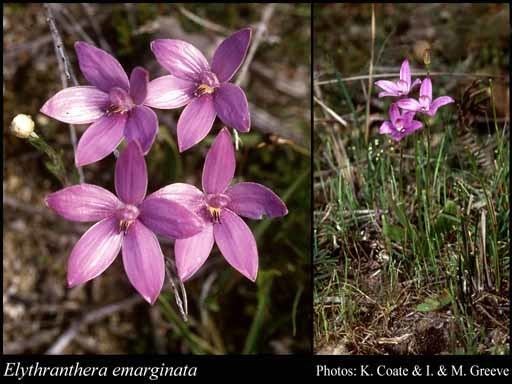 | ||
Similar Elythranthera brunonis, Eriochilus, Spiculaea, Funkiella, Odontorrhynchus | ||
Elythranthera, commonly known as enamel orchids, is a genus of flowering plants in the orchid family, Orchidaceae. It contains two species and a named hybrid, all endemic to Western Australia.
Contents
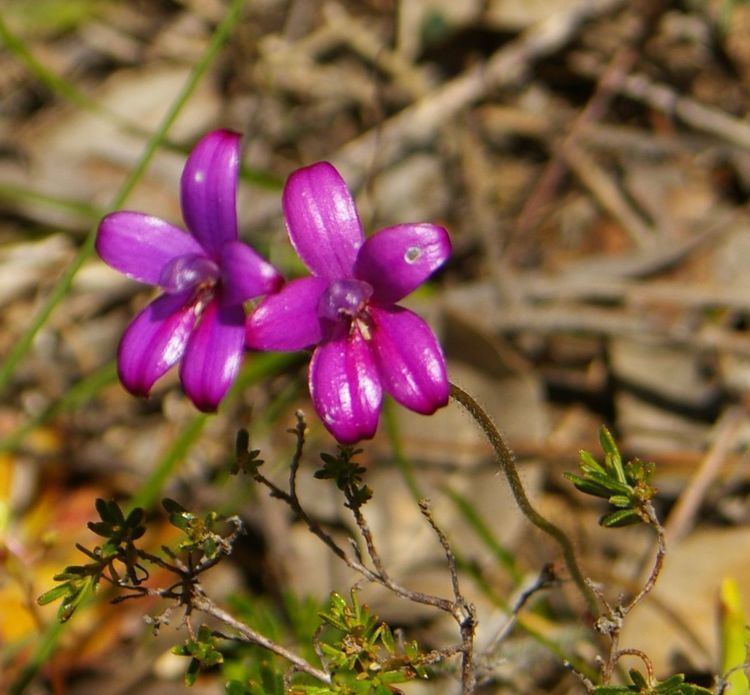
Description
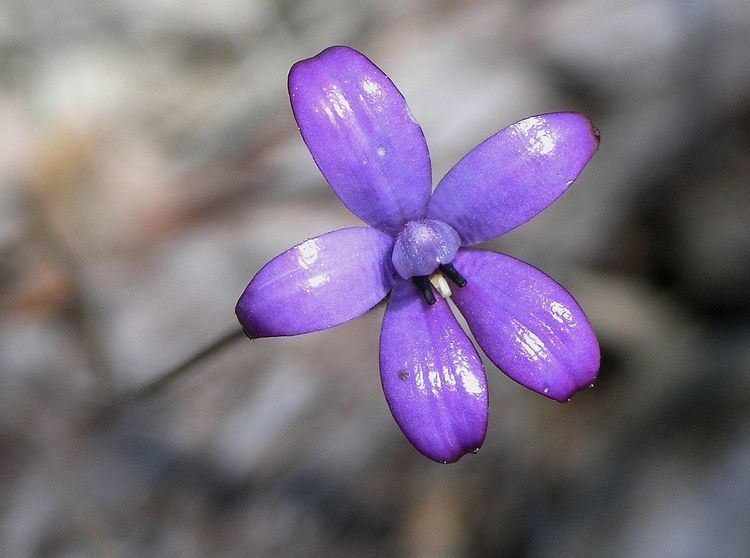
Orchids in the genus Elythranthera are terrestrial, perennial, deciduous, sympodial herbs with a few inconspicuous, fine roots and a tuber partly surrounded by a fibrous, multi-layered protective sheath. Like orchids in the genus Cyanicula, the tuber does not produces "droppers" - instead replacing itself within the same cavity. There is a single hairy convolute leaf at the base of the plant. The leaf is narrow egg-shaped, 2–8 cm (0.8–3 in) long, about 7 mm (0.3 in) wide, simple and lacks lobes and serrations.
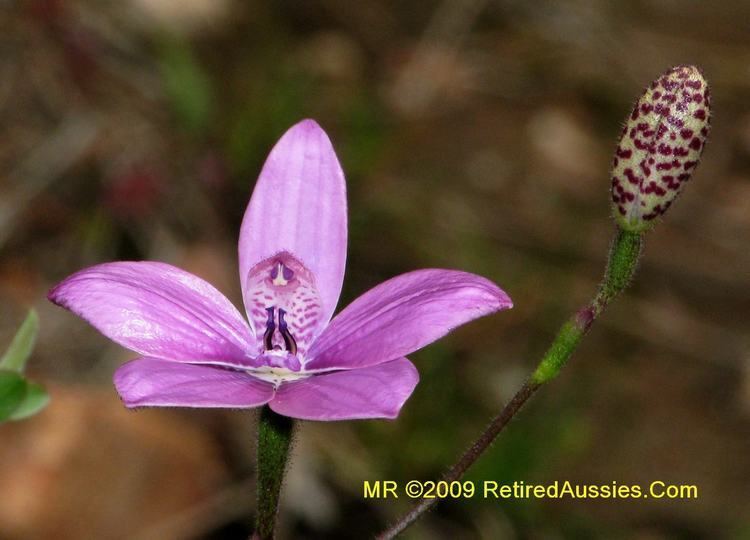
There are up to four resupinate flowers on a stalk 12–30 cm (5–10 in) high. The three sepals and two petals are free and similar in size and shape to each other. They are glossy and pink to purple in colour. As is usual in orchids, one petal is highly modified as the central labellum. The labellum is small and membranous with two large, black calli. The sexual parts of the flower are fused to the column, which has broad, wing-like structures forming a hood over the stamen and stigma. Flowering occurs from late winter to early summer, depending on species. The fruit that follows flowering is a non-fleshy, dehiscent capsule containing up to 500 seeds.
Taxonomy and naming
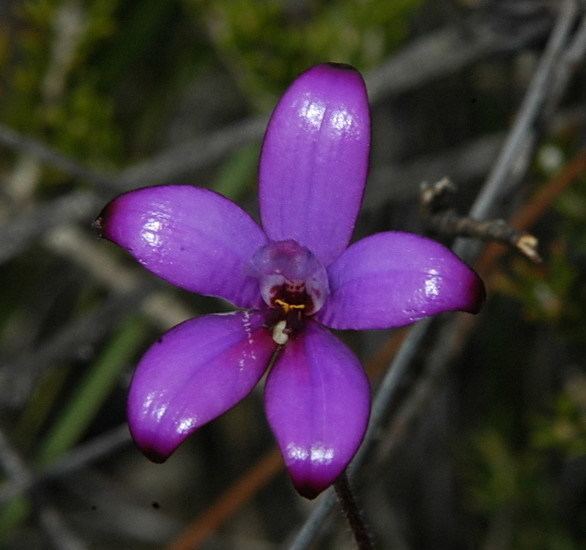
Stephan Endlicher first formally described Glossodia brunonis in 1839, publishing the description in Novarum Stirpium Decades , and including it in the Section Elythranthera. In 1963, Alex George raised the section to the genus Elythranthera in Western Australian Naturalist and renamed Glossodia emarginata (originally named by John Lindley) Elythranthera emarginata.
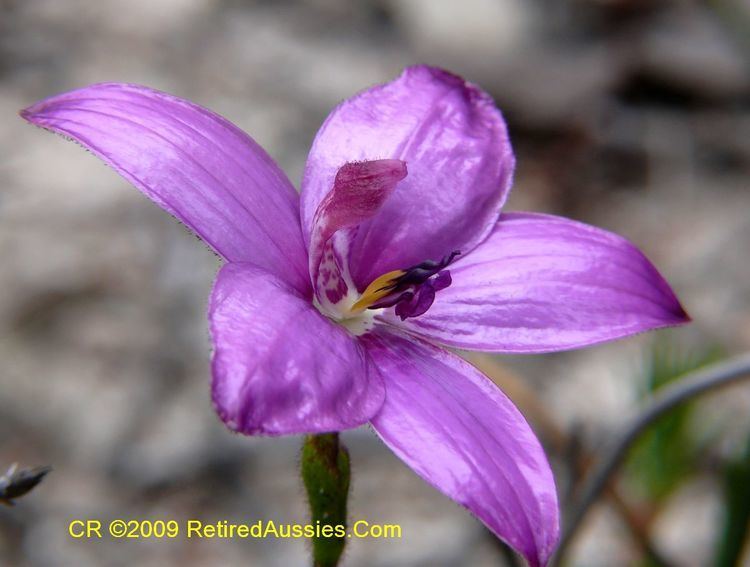
The name Elythranthera is derived from the Ancient Greek word elytron meaning "cover", "sheath" or "husk" and the Latin word anthera meaning "the pollen-bearing part of a stamen" referring to the column wings.
Ecology
The two species of enamel orchid flower at slightly different times and are thought to be pollinated by the same species of native bee, accounting for the rare hybrids that have been found between the two orchid species.
Distribution and habitat
Enamel orchids usually form colonies and are found in heath, shrubland and woodland, in coastal swamps and along creek lines from near Kalbarri south and east to Israelite Bay on the south coast.
